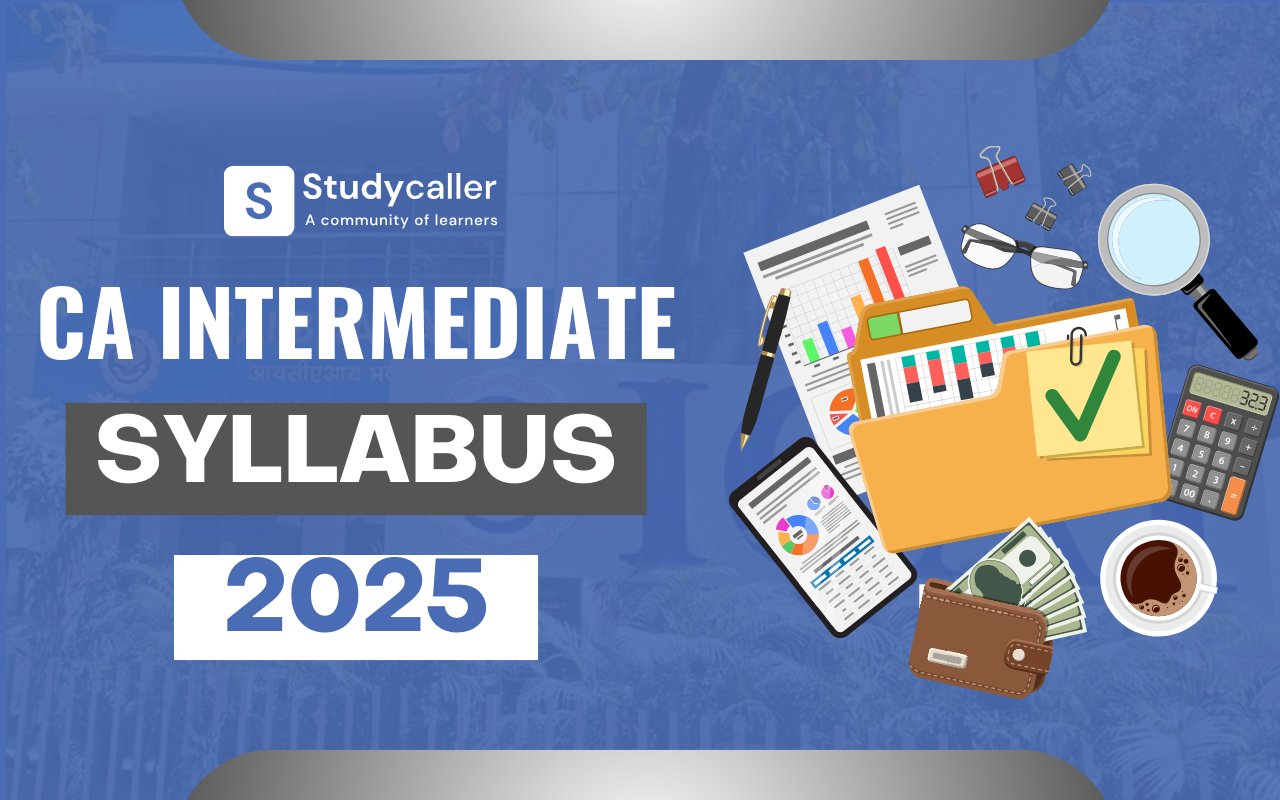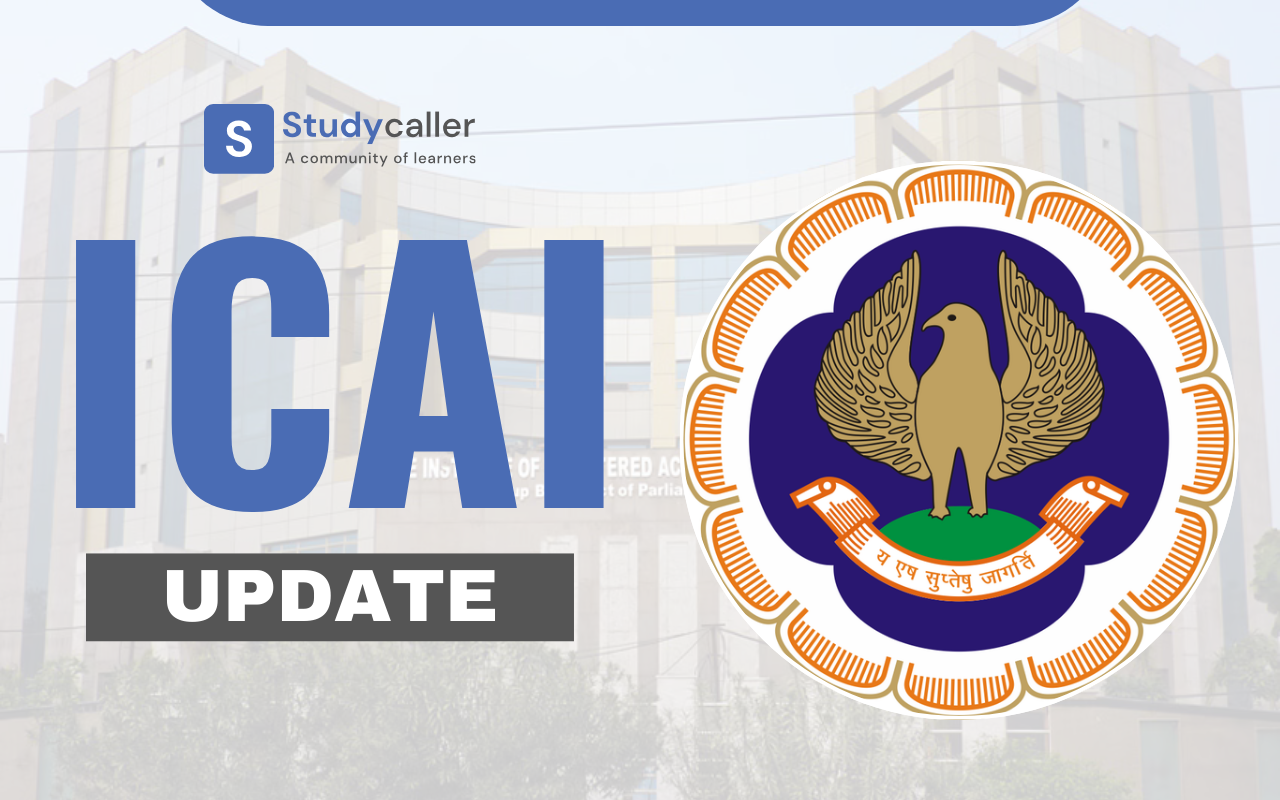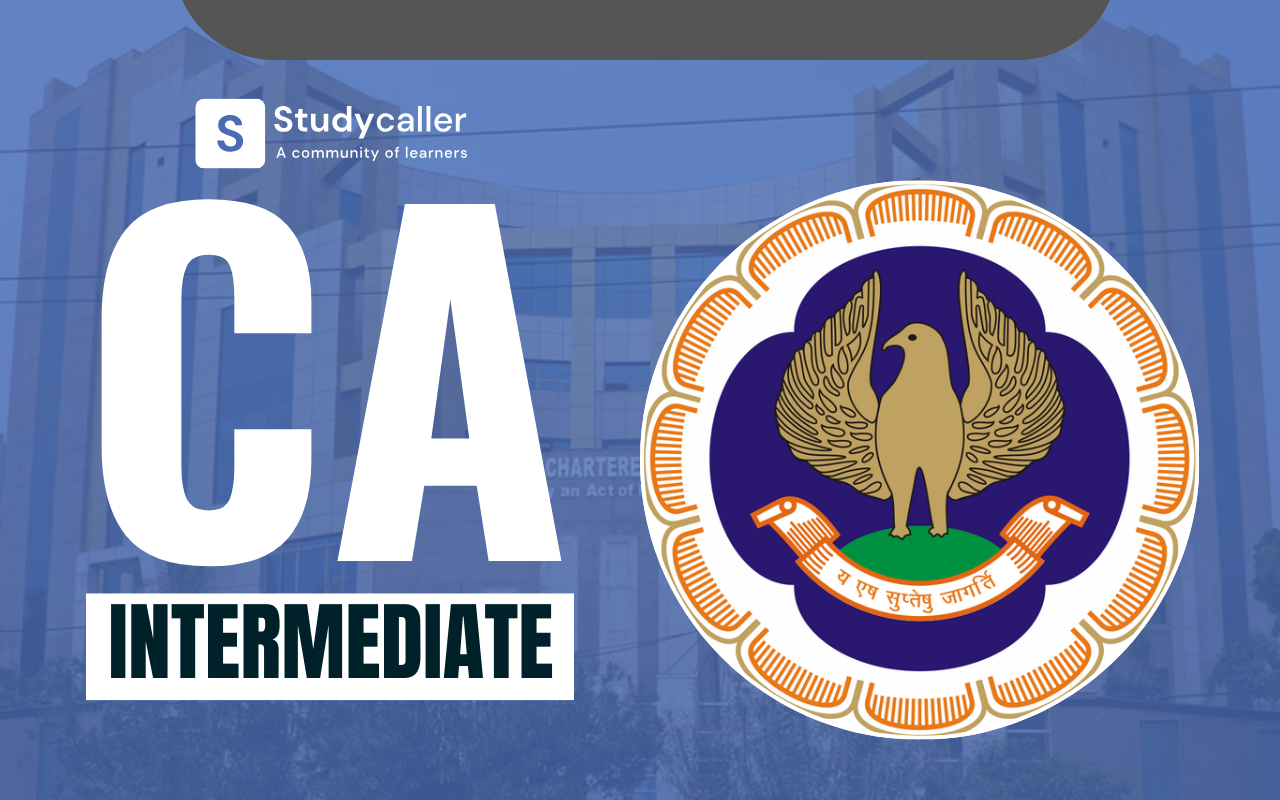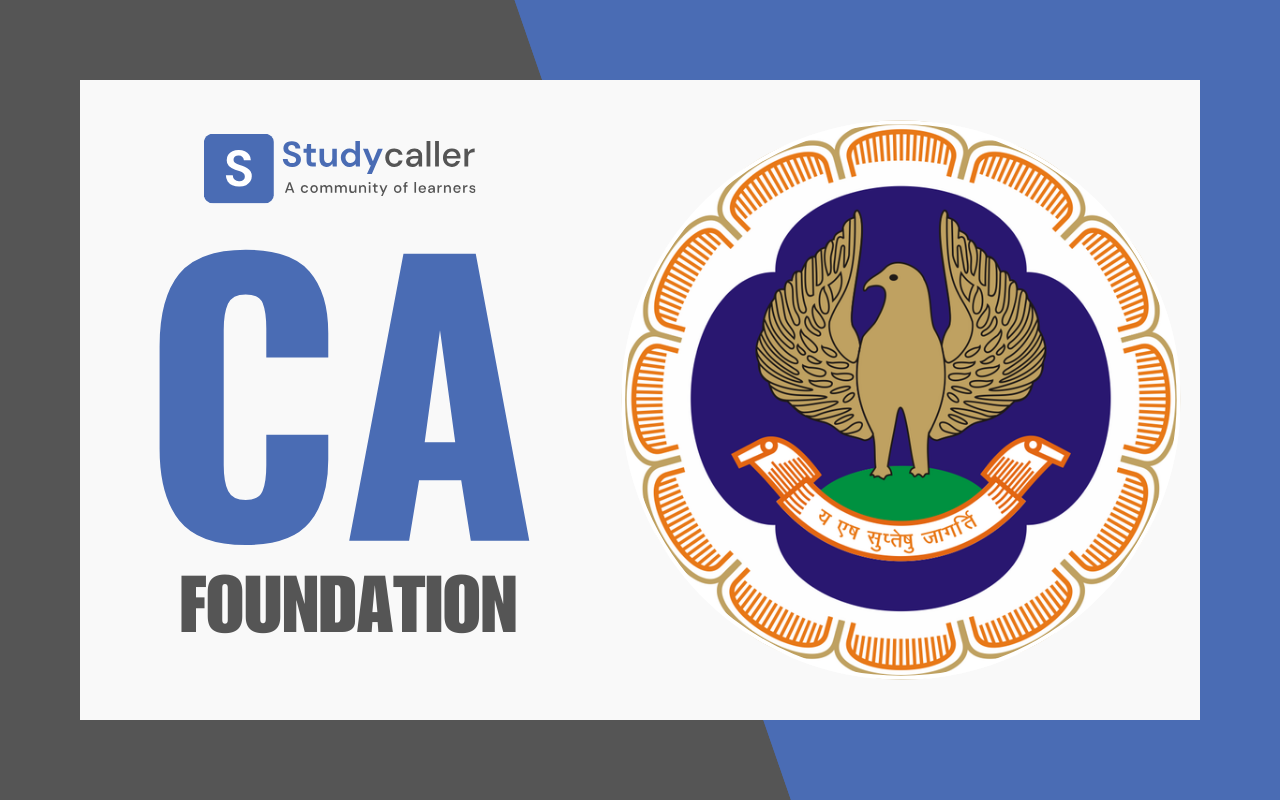CA Intermediate Syllabus May 2025, Check Updated Exam Details
ICAI has updated the CA Intermediate Syllabus 2025. Check the recent CA Inter syllabus for 2025, which includes important details, new subjects, and exam formats.


Table of Content
The ICAI-framed CA Intermediate course covers in-depth topics such as accounting, business legislation, auditing and assurance, cost accounting, taxation, and financial management. Because this phase of the CA course is challenging, most applicants fail the tests on their first try. Multiple tries are typically performed before moving on to the CA Final level.
Preparation for the CA Intermediate exam requires complete concentration, detailed study, and regular practice. Students need to go through all the units of the syllabus since the exam paper contains questions from nearly all the chapters. The CA Intermediate exam is held three times a year, and candidates have to register according to their eligibility and desired exam session.
CA Intermediate Syllabus May 2025
The CA Intermediate syllabus was given a major overhaul in 2023, which took effect for the CA Inter May 2024 exams. Under these changes, MCQs have been added to the exam pattern. The CA Intermediate course is split into two groups, consisting of six papers that include important subjects such as accounting, auditing, business law, and taxation. For a comprehensive overview, see the CA Intermediate Syllabus 2025 table below.
| Paper 1: Syllabus 2025 | |
| Group I | Group II |
| Paper 1: Advanced Accounting | Paper 4: Cost and Management Accounting |
| Paper 2: Corporate and Other Laws | Paper 5: Auditing and Ethics |
| Paper 3: Taxation Section A: Income Tax Law Section B: Goods & Services Tax |
Paper 6: Financial Management & Ethics Management Section A: Financial Management Section B: Ethics Management |
Enroll Now for CA Intermediate Courses
CA Intermediate Exam Pattern for May 2025 Session
See the table below for the new CA Intermediate exam pattern 2025 according to the revised ICAI plan, with paper-wise marks, duration, and assessment structure for Group 1 and Group 2 subjects.
| CA Intermediate Exam Pattern 2025 | ||
| S. No | Paper Name | Marks |
| 1 | Advanced Accounting | 100 Marks |
| 2 | Corporate And Other Laws Part I: Company Law And Limited Liability Partnership Law Part II: Other Laws |
100 Marks Part I: 70 Marks Part II: 30 Marks |
| 3 | Taxation Section A: Income Tax Law Section B: Goods and Services Tax |
100 Marks Section A: 50 Marks Section B: 50 Marks |
| 4 | Cost and Management Accounting | 100 Marks |
| 5 | Auditing and Ethics | 100 Marks |
| 6 | Financial Management And Strategic Management Section A: Financial Management Section B: Strategic Management |
100 Marks Section A: 50 Marks Section B: 50 Marks |
Paper-wise CA Intermediate Syllabus 2025
Here we are going to explain the paper-wise syllabus of CA Intermediate for the May 2025 session. Those candidates who are preparing to attempt this session can check thoroughly.
Paper 1: Advanced Accounting (100 Marks)
The entire CA Inter Advanced Accounts syllabus 2025 is divided into 3 modules, and the students must go through each one of them in depth. ICAI has incorporated 15 chapters in the Advanced Accounting syllabus for 2025. See the below table to understand the CA Intermediate syllabus 2025 for Paper 1, i.e., advance accounting.
| Syllabus Modules | Chapters |
| Module-1 | Chapter 1: Introduction to Accounting Standards |
| Chapter 2: Framework for Preparation and Presentation of Financial Statements | |
| Chapter 3: Applicability of Accounting Standards | |
|
Chapter 4: Presentation and Disclosures-Based Accounting Standards
|
|
| Module-2 |
Chapter 5: Assets-Based Accounting Standards
|
|
Chapter 6: Liabilities-Based Accounting Standards
|
|
|
Chapter 7: Accounting Standards Based on Items Impacting Financial Statement
|
|
|
Chapter 8: Revenue-Based Accounting Standards
|
|
|
Chapter 9: Other Accounting Standards
|
|
|
Chapter 10: Accounting Standards for Consolidated Financial Statement
|
|
| Module-3 |
Chapter 11: Financial Statements of Companies
|
| Chapter 12: Buyback of Securities | |
| Chapter 13: Amalgamation of Companies | |
| Chapter 14: Accounting for Reconstruction of Companies | |
| Chapter 15: Accounting for Branches including Foreign Branches |
Paper 2: Corporate And Other Laws
The following table is for a breakup of CA Inter Syllabus Paper 2: Corporate and Other Laws according to the New Scheme of Education and Training. The paper consists of three modules for systematic study and thorough examination.
| Syllabus Modules | Chapters |
| Module-1 | Chapter 1: Preliminary |
| Chapter 2: Incorporation of Company and Matters Incidental Thereto | |
| Chapter 3: Prospectus and Allotment of Securities | |
| Chapter 4: Share Capital and Debentures | |
| Chapter 5: Acceptance of Deposits by Companies | |
| Chapter 6: Registration of Charges | |
| Module-2 | Chapter 7: Management & Administration |
| Chapter 8: Declaration and Payment of Dividend | |
| Chapter 9: Accounts of Companies | |
| Chapter 10: Audit and Auditors | |
| Chapter 11: Companies Incorporated Outside India | |
| Module-3 | Chapter 12: The Limited Liability Partnership Act, 2008 |
| Module-3 (Part II Other Laws) | Chapter 1: The General Clauses Act, 1897 |
| Chapter 2: Interpretation of Statutes | |
| Chapter 3: The Foreign Exchange Management Act, 1999 |
Paper 3: Taxation
The subject of CA Inter Taxation needs ongoing changes. The two sections of the CA Inter taxation course are indirect taxes and income tax law. A complete taxation syllabus for the 2025 tests is shown in the table below.
| Syllabus Modules | Chapters |
| Module-1 | Section I Chapter 1: Basic Concepts Chapter 2: Residence and Scope of Total Income |
| Section II Chapter 3: Heads of Income |
|
| Module-2 | Section III Chapter 4: Income of Other Persons included in Assessee’s Total Income Chapter 5: Aggregation of Income, Set-Off and Carry Forward of Losses Chapter 6: Deductions from Gross Total Income |
| Section IV Chapter 7: Advance Tax, Tax Deduction at Source and Tax Collection at Source Chapter 8: Provisions for Filing Return of Income and Self-Assessment |
|
| Section V Chapter 9: Income Tax Liability—Computation and Optimisation |
Section B: Good and Service Tax (50 Marks)
| Syllabus Modules | Chapters |
| Module-1 | Chapter 1: GST in India—An Introduction |
| Chapter 2: Supply under GST | |
| Chapter 3: Charge of GST | |
| Chapter 4: Place of Supply | |
| Chapter 5: Exemptions from GST | |
| Chapter 6: Time of Supply | |
| Chapter 7: Value of Supply | |
| Module-2 | Chapter 8: Input Tax Credit |
| Chapter 9: Registration | |
| Chapter 10: Tax Invoice; Credit and Debit Notes | |
| Chapter 11: Accounts and Records | |
| Chapter 12: E-Way Bill | |
| Chapter 13: Payment of Tax | |
| Chapter 14: Tax Deduction at Source and Collection of Tax at Source | |
| Chapter 15: Returns |
Paper 4: Cost and Management Accounting (100 Marks)
The syllabus for the CA Intermediate Course Paper 4: Cost and Management Accounting under the updated Scheme of Education and Training is shown in the following table. The two modules in this syllabus cover important subjects that applicants should research in order to take the CA Intermediate Exam in 2025.
| Syllabus Modules | Chapters |
| Module-1 | Chapter 1: Introduction to Cost and Management Accounting |
| Chapter 2: Material Cost | |
| Chapter 3: Employee Cost and Direct Expenses | |
| Chapter 4: Overheads—Absorption Costing Method | |
| Chapter 5: Activity-Based Costing | |
| Chapter 6: Cost Sheet | |
| Chapter 7: Cost Accounting Systems | |
| Module-2 | Chapter 8: Unit and Batch Costing |
| Chapter 9: Job Costing | |
| Chapter 10: Process and Operation Costing | |
| Chapter 11: Joint Products and By Products | |
| Chapter 12: Service Costing | |
| Chapter 13: Standard Costing | |
| Chapter 14: Marginal Costing | |
| Chapter 15: Budgets and Budgetary Control |
Paper 5: Auditing and Assurance
The syllabus for the CA Intermediate Course, Paper 5: Auditing & Ethics, by the New Scheme of Education and Training, is displayed in the table below. With a focus on the key subjects that candidates must learn to pass the CA Intermediate Exam in 2025, the syllabus is divided into two modules.
| Syllabus Modules | Chapters |
| Module-1 | Chapter 1: Nature, Objective and Scope of Audit |
| Chapter 2: Audit Strategy, Audit Planning and Audit Programme | |
| Chapter 3: Risk Assessment and Internal Control | |
| Chapter 4: Audit Evidence | |
| Chapter 5: Audit of Items of Financial Statements | |
| Module-2 | Chapter 6: Audit Documentation |
| Chapter 7: Completion and Review | |
| Chapter 8: Audit Report | |
| Chapter 9: Special Features of Audit of Different Type of Entities | |
| Chapter 10: Audit of Banks | |
| Chapter 11: Ethics and Terms of Audit Engagements |
Paper 6: Financial Management and Strategic Management
The syllabus for Paper 6 of the CA Intermediate Course, Financial Management and Strategic Management under the New Scheme of Education and Training, is shown in the table below. The curriculum, which covers the fundamental subjects that applicants must learn in order to prepare for the CA Intermediate Exam 2025, is broken up into two divisions and two modules.
| Syllabus Modules | Chapters |
| Module-1 | Chapter 1: Scope and Objectives of Financial Management |
| Chapter 2: Types of Financing | |
| Chapter 3: Financial Analysis and Planning—Ratio Analysis | |
| Chapter 4: Cost of Capital | |
| Chapter 5: Financing Decisions—Capital Structure | |
| Chapter 6: Financing Decisions—Leverages | |
| Module-2 | Chapter 7: Investment Decisions |
| Chapter 8: Dividend Decision | |
| Chapter 9: Management of Working Capital |
Section B: Strategic Management
| Syllabus Modules | Chapters |
| Module-1 | Chapter 1: Introduction to Strategic Management |
| Chapter 2: Strategic Analysis: External Environment | |
| Chapter 3: Strategic Analysis: Internal Environment | |
| Chapter 4: Strategic Choices | |
| Chapter 5: Strategy Implementation and Evaluation |
CA Intermediate Exam Marking Scheme
All the papers of the CA Inter exam consist of objective as well as descriptive questions. Here, 30 marks are comprised for objective-type questions and 70 marks for descriptive-type questions.
Here, it must be kept in mind that there is no negative marking for objective types of questions and all of them are compulsory. The objective type of questions can be either 1 mark or 2 marks. Check the table for paper-wise marks:
| Papers | Subjective | Objective |
| Paper 1: Advanced Accounting | 70 Marks | 30 Marks |
| Paper 2: Corporate Laws | 70 Marks | 30 Marks |
| Paper 3: Cost and Management Accounting | 70 Marks | 30 Marks |
| Paper 4: Taxation | 70 Marks | 30 Marks |
| Paper 5: Auditing and Ethics | 70 Marks | 30 Marks |
| Paper 6: Financial Management | 35 Marks | 15 Marks |
| Paper 6: Strategic Management | 35 Marks | 15 Marks |
CA Intermediate Syllabus Preparation Tips
Here are some important steps for preparing the CA Intermediate Syllabus for 2025:
- Understand the CA Intermediate Syllabus 2025: Start with carefully reading the CA Intermediate Syllabus for 2025. Note down the weightage of each subject so that you can plan your study accordingly.
- Develop a study schedule: Formulate a well-planned study calendar that provides ample time for each topic. Ensure your schedule includes regular review sessions.
- Quality Resources: Use prescribed study guides and textbooks for a better understanding of the topics. See that the materials are current with the recent syllabus modifications.
- Practice Regularly: Improve your problem-solving ability by practicing regularly using sample questions and last year's papers. This will help you get accustomed to the exam pattern.
- Time Management: Practice solving questions under given time constraints to enhance your speed and effectiveness in the exam.
Summary
The Institute of Chartered Accountants of India (ICAI) established the CA Intermediate syllabus, which consists of eight papers split into two categories. Several topics are covered in the course, such as financial management, auditing, taxation, and accounting. For students to perform well on the CA Intermediate exam, they must fully comprehend the syllabus.
FAQs
What is the syllabus of CA Intermediate?
Accounting, business laws, auditing, taxation, cost and management accounting, and financial management are among the topics covered in the two sets of three examinations that make up the Institute of Chartered Accountants of India's (ICAI) CA Intermediate syllabus.
Is 2.5 months enough for CA Inter?
Yes, if you've already finished the course and concentrated on practice and revision, two and a half months can be enough for CA Inter. But it necessitates a well-thought-out strategy, constant work, and setting priorities for important areas.
Is CA Intermediate easy?
Generally speaking, CA Intermediate is a difficult phase of the chartered accountancy path that calls for careful planning, a laser-like focus, and a thorough comprehension of the curriculum.
Can I pass CA Inter in 3 months?
Yes, passing CA Inter in three months is feasible, but it calls for a very concentrated and disciplined study strategy that prioritizes important subjects, follows a set study schedule, and includes frequent revision and practice exams.
Which group of CA Inter is easy?
Although each person's strengths and preferences can influence the degree of difficulty, CA Intermediate Group 2 is generally thought to be easier than Group 1.
Which is the toughest subject of CA Inter?
Because of its intricate ideas and real-world applications, Auditing and Assurance is sometimes regarded as the most difficult topic in the CA Intermediate course.
How many years of articleship for CA?
The articleship duration for CA is three years. Students learn how to apply their theoretical knowledge to real-world situations, acquire practical experience working under a certified public accountant, and build critical skills necessary for a prosperous accounting career.
What if I fail in CA Intermediate?
You can retake the CA Intermediate exam as many times as necessary during your registration period, concentrating on your weak areas and refining your study approach, so failing it doesn't mean your CA adventure is over.
How to pass CA Inter in first attempt?
Establish a regular study schedule, fully comprehend the content and exam format, practice frequently with practice exams, and give priority to conceptual clarity and application if you want to pass the CA Inter exam on your first try.
How long is CA Inter valid?
The CA Intermediate registration is valid for 5 years from the date of registration. After the initial 5-year period, you can revalidate your registration for another 5 years by paying a revalidation fee of ₹400.








